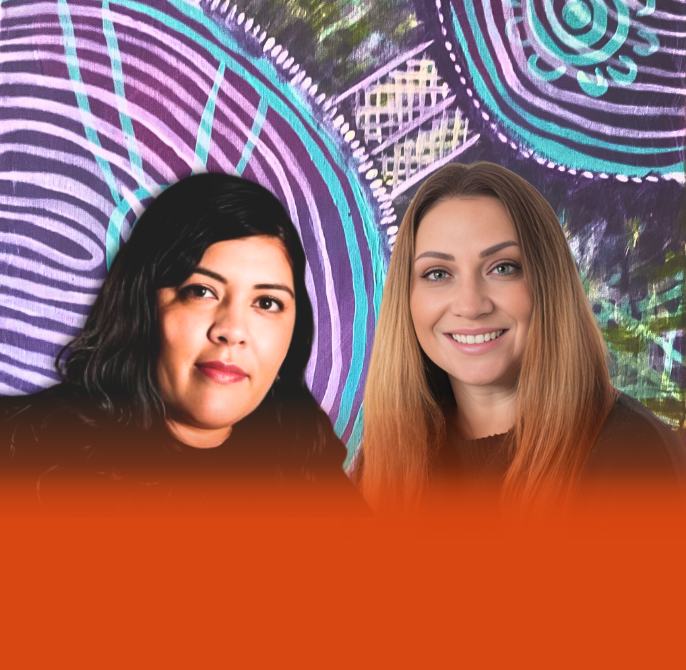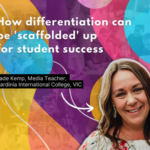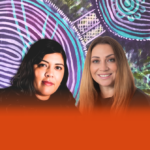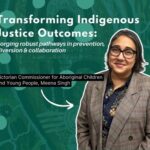Conference centres First Nations voices to help close the gap

When the Closing the Gap agreement was signed in partnership between Australian governments and the Coalition of Peaks, one of the important factors was holding governments accountable for decades of speaking for Indigenous people, rather than listening to them, on solutions to assist First Nations communities.
In October, The Hatchery will host Building Partnerships to Close the Gap: Shared decision making to accelerate Closing the Gap on Gadigal Land, where a number of First Nations experts will discuss different ways the country can look to close the gap through self-determination, shared decision making and Indigenous-led solutions.
Victorian Aboriginal Legal Service CEO Nerita Waight will be hosting a forum, entitled “Strengthening the accountability & outcomes of government policies, programs & services.”
The Yorta Yorta and Narrandjeri woman is also co-chair of Ngaweeyan Maar-oo, the shared decision-making partner with the Victorian Government and the Coalition of Peaks on Closing the Gap implementation in Victoria.
“To see real change, we need to keep governments accountable for their promises and all the decisions they make,” Ms Waight said.
Ms Waight highlighted the First Peoples’ Assembly (of which she is also a member) and the Yoorrook Justice Commission – who have held public, truth-telling hearings – as organisations who have been holding the government’s work in helping Indigenous people to account.
Later this year, the Assembly – the democratically elected voice of First Nations people in Victoria – will begin Treaty negotiations with the state government, the first of its kind in Australia’s history.
The idea being an eventual recognition of self-determination and Indigenous people in the state having financial independence, whilst simultaneously holding the state to account for the way Aboriginal people are governed.
“Self-determination, of course, is about our communities’ making decisions about the things that affect our lives,” Ms Waight said.
Highlighting the latest Closing the Gap data, which showed a number of key metrics – including suicide, incarceration, and out-of-home care (OOHC) were all tracking in the wrong direction, Ms Waight argued Indigenous organisations needed to hold the government to account as “frankly, they’re not doing such a great job”.
“One example that will always live in my mind rent free is in 2017 the Victorian Government created bail laws without listening to Aboriginal communities. And those bails led to a huge increase in the number of Aboriginal people in custody,” she said.
Ms Waight highlighted the advocacy of Veronica Nelson’s family, who campaigned for a change in the bail laws – described as an “unmitigated disaster” – after Ms Nelson’s death in custody after being denied bail.
After years of campaigning, the Nelson family finally got a coronial inquest into Veronica’s death, which found gross failures in her care and directly resulted in bail law changes in Victoria earlier this year.
In the last three months after the laws were changed, Aboriginal people in incarceration has dropped by almost 15 per cent, and there are over 400 less people on remand in Victoria.
“That shows you that not only are Aboriginal people excellent at self-determining solutions that work for their own community; they’re excellent at driving solutions that work for the whole of the Victorian community,” Ms Waight said.
Building Partnerships to Close the Gap: Shared decision making to accelerate Closing the Gap, will see a number of different experts speak on their roles in helping close the gap.
They include Wiradjuri and Yorta Yorta woman Heidi Bradshaw, CEO of the Narang Bir-rong Aboriginal Corporation. Her presentation details the importance of shifting the support of Aboriginal children in OOHC to Aboriginal community-controlled organisations (ACCOs), which has long been called for to help close the gap.
“At the heart of this transition is the recognition that ACCOs are uniquely positioned to provide culturally safe, appropriate and effective care for Aboriginal children and young people,” Ms Bradshaw said.
“Unlike mainstream organisations, ACCOs are governed and operated by Aboriginal people who understand the cultural values, traditions, and protocols of our communities. This deep understanding is critical in providing care that is not only responsive to the physical and emotional needs of these children but also to their cultural and spiritual identities.”
Ms Bradshaw emphasised the importance of a “collaborative and inclusive approach” when it came to decision making surrounding Aboriginal children and young people.
“At the core of this approach is the belief that those who are most directly involved in a child’s life—carers, the children themselves and the case workers who support them—are best positioned to determine what is in the child’s best interests,” she said.
“This consultative process allows for decisions to be made that are not only in alignment with the child’s cultural needs and personal preferences but also take into account the practical realities faced by carers and the expertise of case workers.”
Other presentations include discussions on the unilateral benefits and strength of community-run birthing programs to help improve community health outcomes, in turn breaking the cycles of disadvantage and close the gap; and a presentation and interactive seminar by The Wiyi Yani U Thangani Institute for First Nations Gender Justice, talking about a new vehicle for government, driven by First Nations women, girls and gender diverse mob.
Ms Waight said First Nations-led events like this were all about creating a knowledge base for people outside of the sector.
“Once you create knowledge and create support in other areas, you can then Marshal that into action,” she said.
“Often enough… people are hearing about Aboriginal people from politicians, not from Aboriginal people themselves…they’re hearing distorted versions of our communities that are loaded with bias and racism, and sometimes people need to see and hear the alternative [and] hear the truth, so that they can then kind of have a little reality check around just how strong, how resilient, and how effective our communities are.”
The Building Partnerships to Close the Gap event will take place on the 16-17 of October 2024 on Gadigal Country in Sydney, with an online option also available.
View the full program here: https://the-hatchery.co/event/first-nations-partnerships-conference-nsw-oct-2024
Article originally posted by National Indigenous Times




